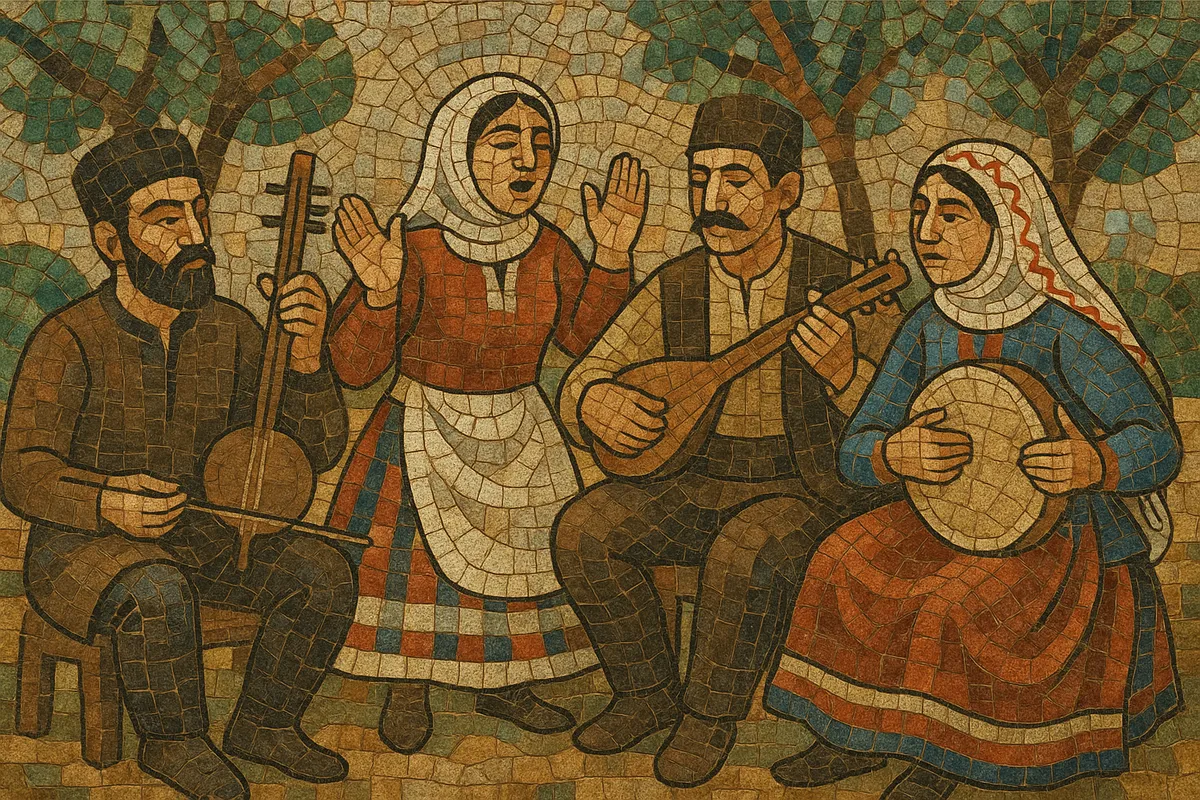Gilaki music is the traditional folk music of the Gilaki (Gileki) people from Gilan Province on Iran’s Caspian Sea coast. It lives in village rituals, seasonal festivities, rice-harvest celebrations, fishing communities, and wedding ceremonies.
Stylistically it favors clear, memorable melodies sung in the Gilaki language, often in call-and-response between a lead singer and a chorus. Dance tunes lean on buoyant 6/8 and other compound meters, while lullabies and narrative songs may be freer and more rubato. The texture is usually monophonic or lightly heterophonic, with ornamented vocal lines riding over percussive grooves.
Typical instruments include kamancheh (spike fiddle), tar/setar (long-neck lutes), ney (end-blown flute), sorna (shawm) with dohol/naqāreh (drums), frame drums like dayereh/daff, violin, and—since the 20th century—accordion in dance repertoires. The music shares modal DNA with broader Persian traditions while reflecting Caspian and Caucasian cross-currents.
Gilan’s music traces to the Deylamite/Caspian cultural sphere, where communal singing, field calls, and ritual pieces anchored agrarian and maritime life. Songs marked rice planting and harvest, Nowruz (spring new year), and communal work like net-hauling, with responsorial structures facilitating group participation.
By the late 19th and early 20th centuries, itinerant performers and local masters codified dance genres (notably the lively Qāsemābadi styles) and wedding repertoires. Interaction with neighboring Caucasian and Azerbaijani cultures, via trade across the Caspian, introduced timbral and modal flavors (e.g., shawm-and-drum outdoor bands, accordion for social dances) that blended with Persian modal practice.
Mid-20th-century radio and provincial cultural centers (e.g., Radio Gilan) began broadcasting local songs, helping standardize versions and elevate notable singers. Ethnomusicological fieldwork and commercial recordings captured village ensembles, women’s wedding choruses, and seasonal songs, preserving variants that might otherwise have remained local.
After 1979, regional arts continued in community settings, with periodic waves of revivalism. Professional ensembles arranged folk melodies for concert stages, and national artists incorporated Gilaki material into broader Persian programs. From the 2000s onward, folk ensembles and media platforms amplified Gilaki songs, dance tutorials, and archival field recordings, fostering a renewed pride and a living, evolving tradition.
Contemporary performances range from acoustic village lineups to stage-ready folk bands using kamancheh, tar, accordion, and hand percussion. While core dialect, melodies, and dance meters remain, arrangements increasingly borrow from world, pop, and folk-rock aesthetics.


